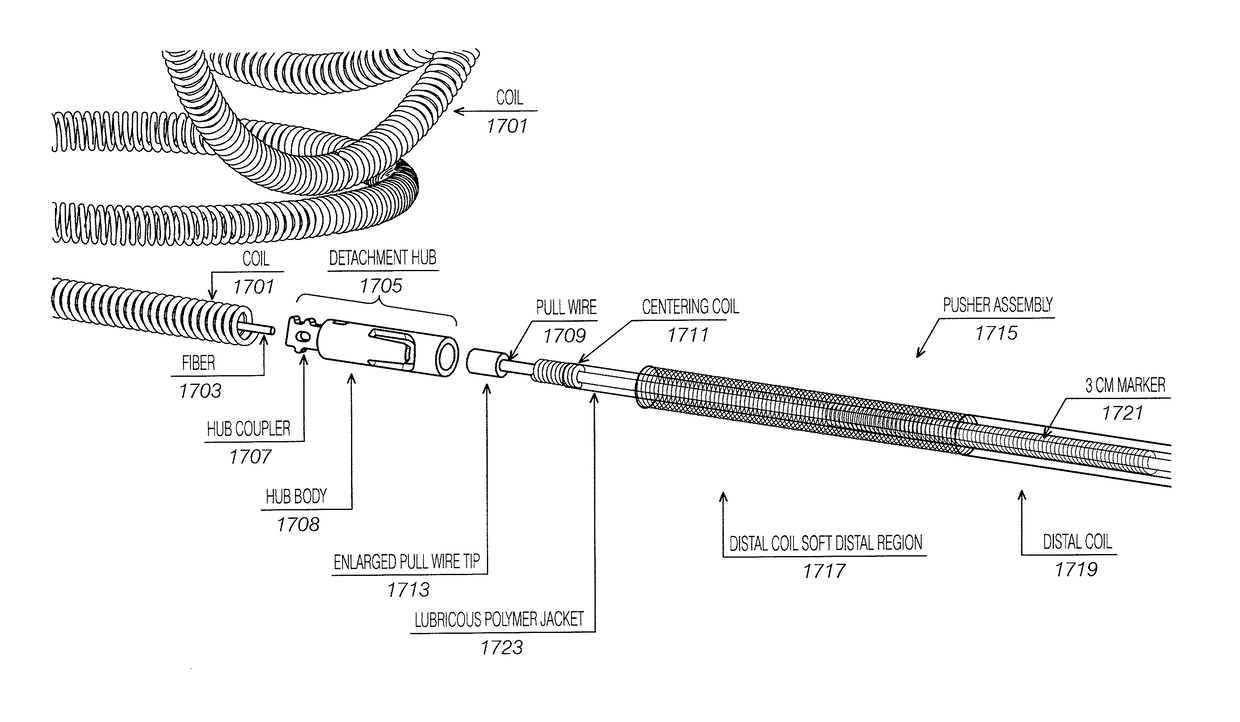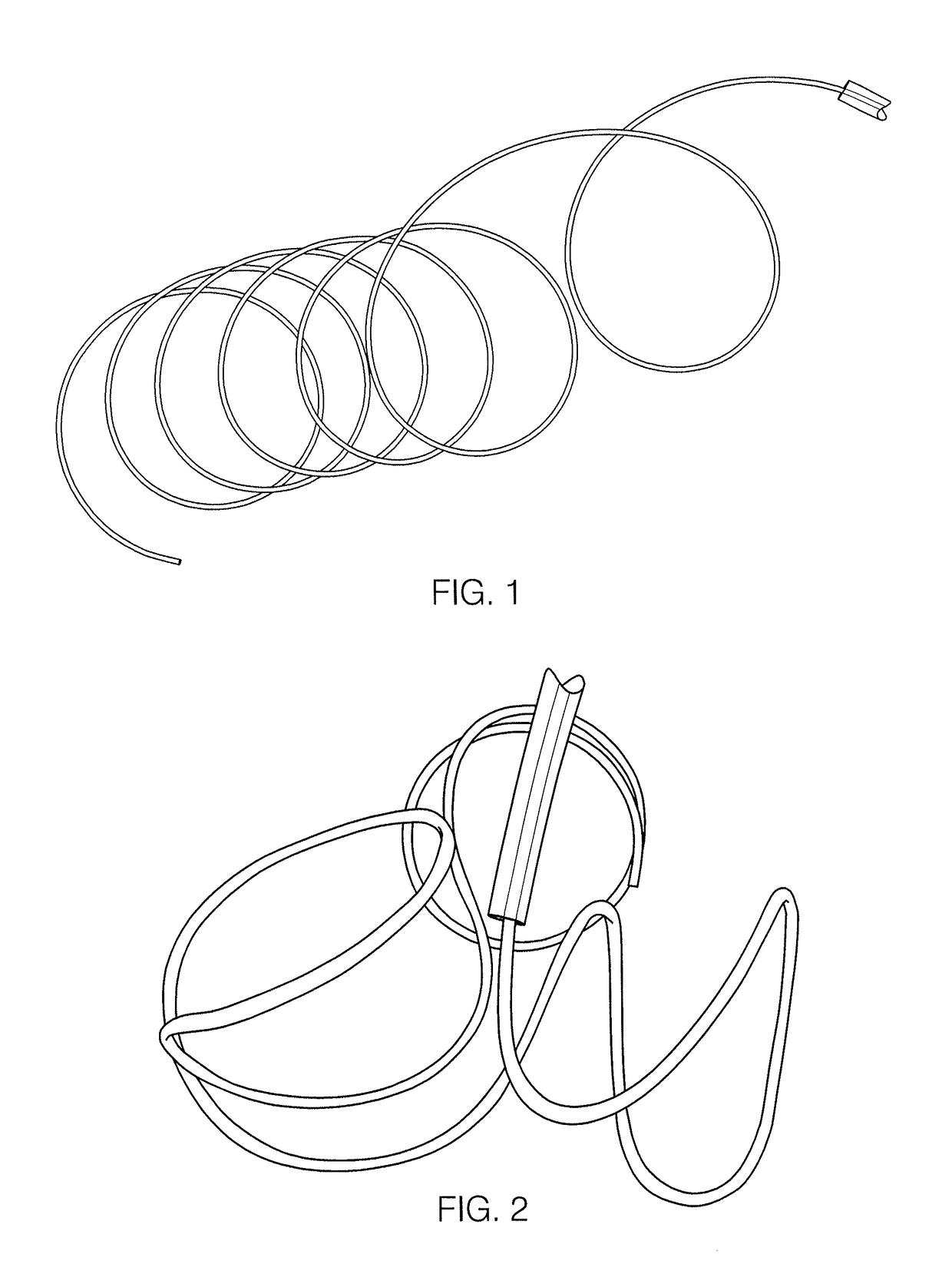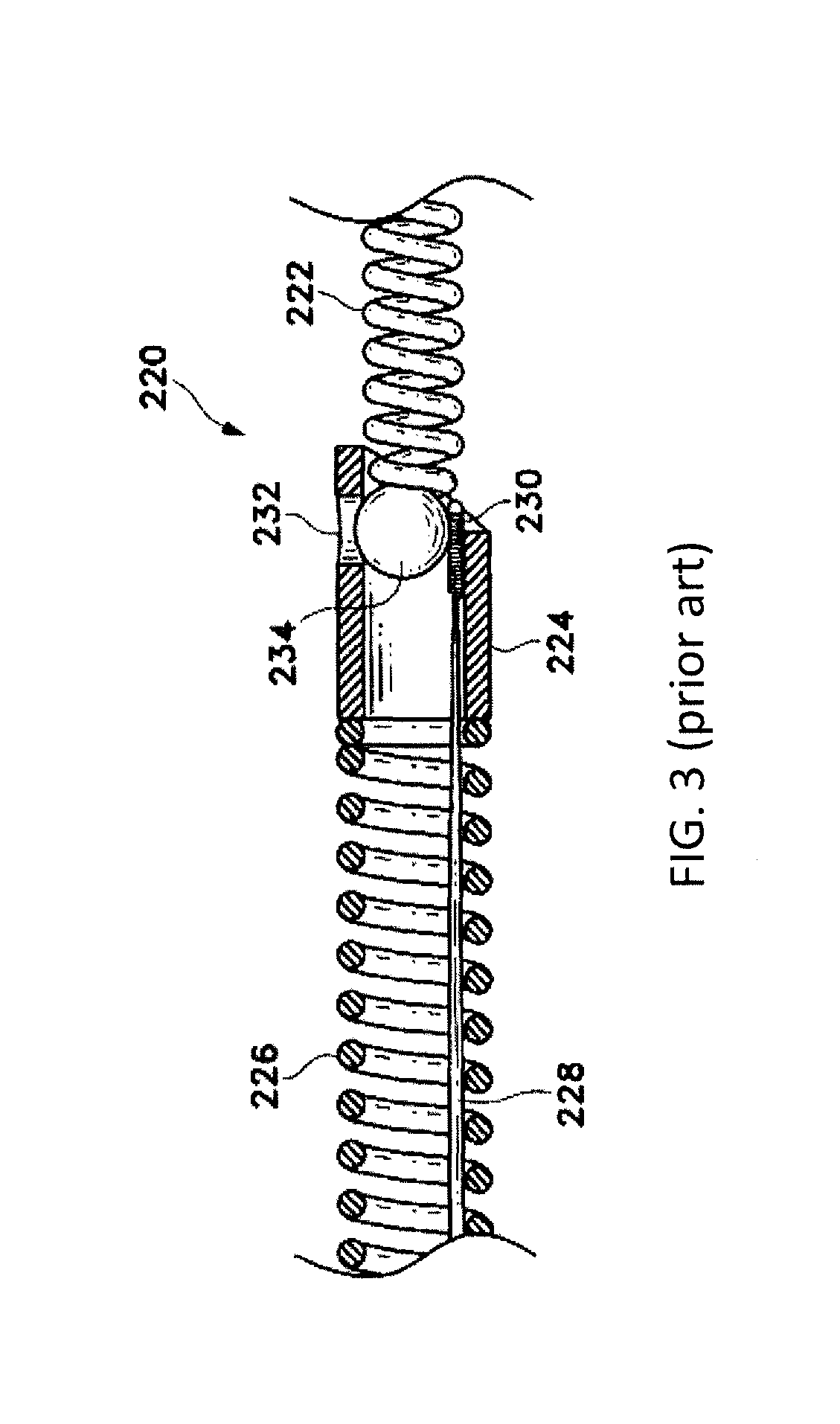Mechanical embolization delivery apparatus and methods
a technology of mechanical embolism and delivery apparatus, which is applied in the field of neurovascular implants, can solve the problems of many mechanical delivery systems described herein, errors and frustration on the part of surgeons, and the reliability and robustness of the apparatus and method of operation, and achieve the effect of increasing the softness/flexibility of the distal end
- Summary
- Abstract
- Description
- Claims
- Application Information
AI Technical Summary
Benefits of technology
Problems solved by technology
Method used
Image
Examples
Embodiment Construction
[0057]Described herein are mechanical delivery apparatuses and methods of using them to deliver neurovascular implants. In general, these mechanical delivery apparatuses may deliver quickly and may reliably release an implant (such as a vasoocclusive coil) from the delivery apparatus. This may ensure that the implant is released with minimal force so that the implant is not partially left in a vessel or neck of an aneurysm when filling the aneurysm. These apparatuses typically require a mechanical deformation (e.g., of a release or trap detent) to release and eject the implant.
[0058]For example, FIG. 4 shows one example of a system as described herein. In this example, the system includes an implant 401 (shown as a coil) affixed (permanently) to a hub assembly 403. The hub assembly includes an implant coupler (implant adapter) 405 to which the proximal end of the coil is affixed. The implant coupler is also permanently connected to the deformable mechanical release (trap) 407. The d...
PUM
 Login to View More
Login to View More Abstract
Description
Claims
Application Information
 Login to View More
Login to View More - R&D
- Intellectual Property
- Life Sciences
- Materials
- Tech Scout
- Unparalleled Data Quality
- Higher Quality Content
- 60% Fewer Hallucinations
Browse by: Latest US Patents, China's latest patents, Technical Efficacy Thesaurus, Application Domain, Technology Topic, Popular Technical Reports.
© 2025 PatSnap. All rights reserved.Legal|Privacy policy|Modern Slavery Act Transparency Statement|Sitemap|About US| Contact US: help@patsnap.com



